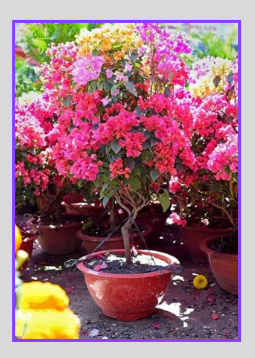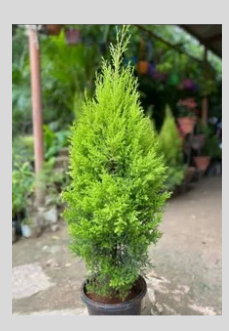Creating a beautiful outdoor space starts with selecting the right plants. Outdoor plants not only enhance the aesthetics of your garden but also contribute to its overall health and biodiversity. They can provide shade, attract beneficial pollinators, and improve air quality. In this comprehensive guide, we will explore various outdoor plants, detailing their growth requirements, ideal planting conditions, and blooming seasons. Whether you have a sun-drenched patio or a shaded nook, there’s an outdoor plant suited for every spot, ensuring that your garden flourishes throughout the year.
1. Lilyturf (Liriope muscari)
Lilyturf, often used as a ground cover, features lush, grass-like leaves that provide a soft texture to garden beds. Its spikes of small purple flowers offer a stunning visual contrast, making it a favorite among landscape designers.
Sunlight Requirements
This adaptable plant prefers partial shade but can also thrive in full sun. This flexibility allows it to fit into a variety of garden designs, from shaded woodland areas to sunnier spots.
Size and Season
Typically growing 1-2 feet tall, Lilyturf blooms from late summer to early fall. Its late-season blooms make it a valuable addition to gardens that need color as other plants begin to fade.
Care Tips
To maintain its health, ensure it is watered regularly, especially in dry spells. Lilyturf is relatively low-maintenance, making it a perfect choice for busy gardeners.

2. Plumeria (Frangipani)
Plumeria is renowned for its stunning, fragrant flowers that come in shades of pink, yellow, and white. The succulent-like leaves add to its tropical appeal, making it a perfect choice for creating a lush, exotic garden vibe.
Sunlight Requirements
For optimal growth and flowering, Plumeria requires full sun. This means it should be planted in an area where it can soak up direct sunlight for most of the day.
Size and Season
Depending on the variety, Plumeria can grow anywhere from 3 to 25 feet tall. It typically blooms in spring and summer, filling your garden with enchanting scents and colors.
Care Tips
Plumeria thrives in well-drained soil and benefits from regular watering during the growing season. Fertilizing with a balanced, slow-release fertilizer can enhance its blooming potential.

3. Bougainvillea
Bougainvillea is a showy plant that boasts vibrant, papery bracts surrounding small white flowers. Its sprawling growth habit allows it to be used as a climber, ground cover, or even as a stunning hanging basket.
Sunlight Requirements
This plant thrives in full sun, needing ample light to produce its spectacular blooms. A sunny location ensures vibrant color and vigorous growth.
Size and Season
Bougainvillea can reach heights of 3 to 30 feet, depending on the type and pruning techniques used. It blooms from spring to fall, providing a long-lasting display of color.
Care Tips
Regular pruning helps maintain its shape and encourages new growth. Bougainvillea is drought-tolerant once established, making it a great choice for low-water gardens.

4.Cypress Golden (Cupressus macrocarpa 'Goldcrest')
Cypress Golden is celebrated for its bright golden-yellow foliage and dense, conical shape. This evergreen conifer adds structure and year-round color to gardens.
Sunlight Requirements
This plant prefers full sun and is well-suited for sunny garden beds or borders.
Size and Season
Typically growing 4-10 feet tall, Cypress Golden maintains its vibrant foliage throughout the year, adding a striking element to any landscape.
Care Tips
Cypress Golden requires well-drained soil and should be watered during dry spells to maintain its vibrant color. Regular pruning can help manage its size and shape.

5. Palms
Palms are iconic outdoor plants that bring a tropical feel to any garden. They come in a wide variety of shapes and sizes, typically characterized by large, fan-like or feather-like leaves.
Sunlight Requirements
Most palm species thrive in bright, indirect light, while some can tolerate full sun. The specific light requirements can vary by species, so it’s essential to choose the right palm for your garden’s conditions.
Size and Season
Palms can range from 2 to 100 feet tall, depending on the species. They generally grow year-round, with flowering varying widely.
Care Tips
Regular watering is crucial, especially in dry periods. Fertilizing with a slow-release palm fertilizer can promote healthy growth and vibrant foliage.

6. Bird of Paradise Plant (Strelitzia reginae)
The Bird of Paradise is a stunning tropical plant known for its large, banana-like leaves and striking orange and blue flowers. Its unique shape and color make it a centerpiece in any garden.
Sunlight Requirements
This plant prefers full sun and thrives best in bright conditions, which helps it produce its vibrant blooms.
Size and Season
Typically growing 5-6 feet tall, the Bird of Paradise blooms in late winter to early spring, making it a beautiful harbinger of the warmer months.
Care Tips
Regular watering and occasional fertilization during the growing season will encourage prolific blooms. Pruning dead leaves can help maintain its appearance.

7. Coleus (Solenostemon scutellarioides)
Coleus is prized for its vibrant foliage, featuring a dazzling array of colors and patterns. This plant is primarily grown for its leaves, making it a fantastic option for adding visual interest to your garden.
Sunlight Requirements
Coleus prefers partial shade; too much direct sunlight can scorch its leaves. This adaptability makes it perfect for gardens with varying light conditions.
Size and Season
Usually growing 1-3 feet tall, Coleus thrives in warm months, typically from spring to fall, providing a long season of colorful foliage.
Care Tips
Regular watering is essential, especially during hot weather. Pinching back the tips can promote bushier growth and enhance its appearance.

8. Hibiscus
Hibiscus plants are recognized for their large, colorful flowers and lush foliage, adding a tropical flair to gardens. They are available in many varieties, each with unique flower shapes and colors.
Sunlight Requirements
Hibiscus thrives in full sun, which is necessary for producing its stunning blooms.
Size and Season
These plants can grow 3-10 feet tall, depending on the variety, and typically bloom in summer to fall, providing a continuous show of color.
Care Tips
Hibiscus benefits from regular watering and should be fertilized during the growing season to encourage abundant flowering. Pruning after flowering can help maintain its shape and promote new growth.

9. Rose
Roses are classic outdoor plants known for their fragrant blooms and thorny stems. Available in a wide range of colors and types, they can be used in various garden styles.
Sunlight Requirements
Roses require full sun for the best blooms, ideally receiving at least 6 hours of sunlight each day.
Size and Season
Depending on the type, roses can vary significantly in size, typically ranging from 1-6 feet tall. They bloom from spring to fall, providing beauty and fragrance throughout the growing season.
Care Tips
Regular deadheading encourages new blooms, while consistent watering and fertilization will promote healthy growth. Ensure good air circulation to prevent diseases.

10. Jasmine (Jasminum)
Jasmine features fragrant white or yellow flowers, often growing as a climbing plant with glossy green leaves. Its sweet scent makes it a favorite in gardens and landscapes.
Sunlight Requirements
This plant prefers full sun to partial shade, allowing for flexibility in placement.
Size and Season
Jasmine can grow 3-10 feet tall, depending on the variety. It typically blooms in spring and summer, filling your garden with delightful fragrances.
Care Tips
Regular watering is essential, especially during dry spells. Pruning after flowering can help maintain its shape and encourage more blooms.

11. Geraniums (Pelargonium)
Geraniums are popular outdoor plants known for their bright, colorful flowers. They can be grown upright or trailing, making them versatile for borders, containers, or hanging baskets.
Sunlight Requirements
Geraniums thrive in full sun, making them an excellent choice for sunny spots in the garden.
Size and Season
Typically growing 1-2 feet tall, geraniums bloom from spring to fall, offering a vibrant display for many months.
Care Tips
Regular deadheading can promote continuous blooming. Ensure they are watered adequately, particularly in hot weather, and fertilize regularly for optimal growth.

12. Hostas
Hostas are beloved for their broad, lush leaves, which come in various shades of green and variegated patterns. They are ideal for creating a serene, shade-filled garden.
Sunlight Requirements
Hostas prefer partial to full shade, making them perfect for shaded areas of the garden.
Size and Season
These plants can range from 1-3 feet tall and wide, with their foliage present from spring to fall and flowers appearing in summer.
Care Tips
Regular watering is crucial, especially in dry periods. Mulching can help retain moisture and suppress weeds.

